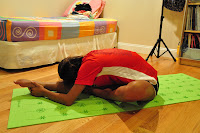 |
| boiled cow/beef tongue |
 |
| Chinese-style stewed cow tongue |
 |
| baked spaghetti with cow tongue tomato sauce |
Now the question is if cow tongue is healthy. Because what's the point of forcing yourself to eat something that's not even good for you?
The answer is: yes, in a small amount.
Cow tongue contains (per 3 oz. serving):
-2.7 mcg of vitamin B12
(daily recommended intake is 2.4 mcg)
-3.5 mg zinc
(men need 11 mg, women need 8 mg/day)
-2.2 mg iron
(men need 8 mg, women need 18 mg/day)
-3 mg vitamin B3/niacin
(both men and women need 14-16 mg daily)
-0.3 mg vitamin B2/riboflavin
(1.1-1.3 mg recommended daily intake)
-7 g saturated fat
(eat as little as possible, recommended no more than 16-22 g a day)
-0.7 trans fat
(eat as little as possible, no more than 2 g a day)
In case you were wondering what measurement 'mcg' is, here's what it is in comparison to mg or g.
g= grams
mg= milligrams
mcg= micrograms
1 g= 1,000,000 mcg1 mg= 1,000 mcg
1 g= 1,000 mg
As you can see, it contains lots of good nutrients, but also bad fats. So don't feel extremely guilty if you eat a lot of it; just try not to have too much. I won't have a problem with that! :P
































